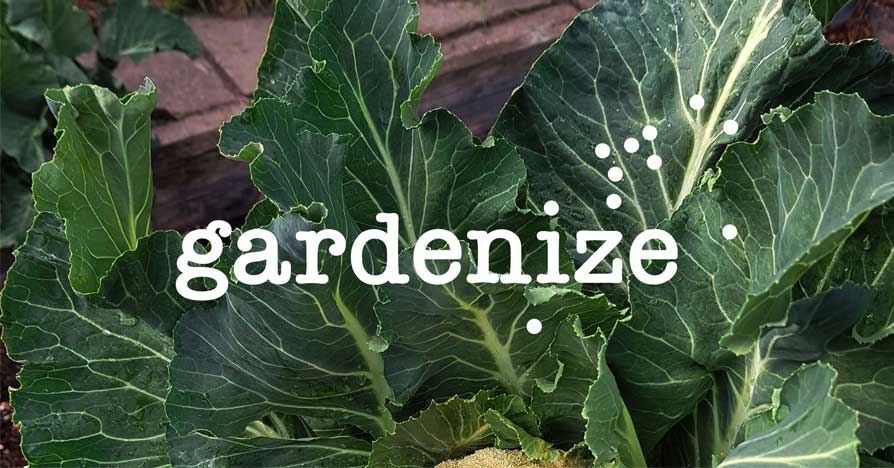Upside-down gardening: June in Central Otago
If you work full-time, it’s hard to find a time when you can get out in the garden in daylight, now that the days are shorter. This means that you need to plan your outdoor jobs for the weekend and be realistic about what you can achieve. The shortest day will be on 21 June, so we’ll soon be back to squeezing in a few minutes of gardening before dinner.
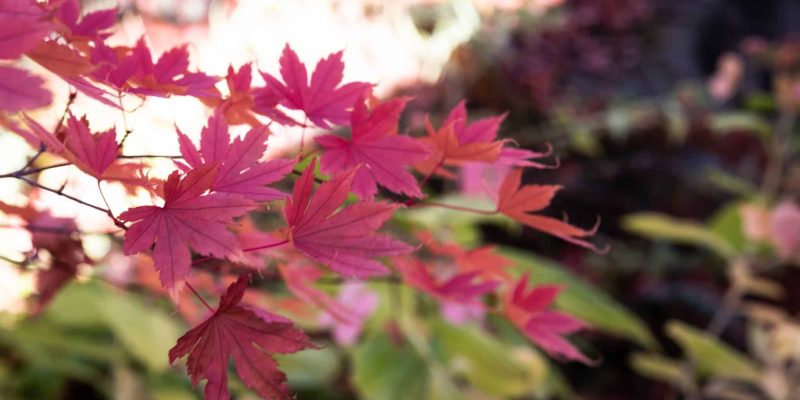
Winter
Experiments with zinnias and plants for rocky slopes, tidying up fallen leaves and faded flowers, seeds to sow for the vegetable garden, plus prioritising jobs for June.

Zinnias: if at first you don’t succeed…
Following advice I found on the internet, In December, I scattered some zinnia seeds in a sunny, but exposed part of the garden. Apparently, they do not like to be transplanted and there is no point starting them too early. One or two sad little plants managed to produce small flowers in May, but it was very late in the season and June will be too cold for them to survive. Maybe I should just stick to plants that grow easily in the conditions we have here, but I’m going to try again next year. I’ll go against the advice I found and will raise the seeds indoors, starting in October.
Tidying up
Fallen leaves
The fabulous autumn colours have hung on well this year, but now it’s time to collect up leaves from lawns and paths and put them in the worm farm. I’ll ask my husband to use the leafblower to collect them, as that breaks the leaves up smaller. If there are too many for the worm farm, I’ll put some into sacks and put them somewhere discreet for at least a year so they can rot down quietly to make leafmould. I don’t bother to collect leaves from borders: they make a natural mulch, and I am happy for them to cover the soil, protecting the plants underneath. They never become too heavy for the emerging spring plants to push through, and you only need to look at the beautiful soil on a forest floor to see how well the layers of leaves that are shed each year build up gradually into rich humus.
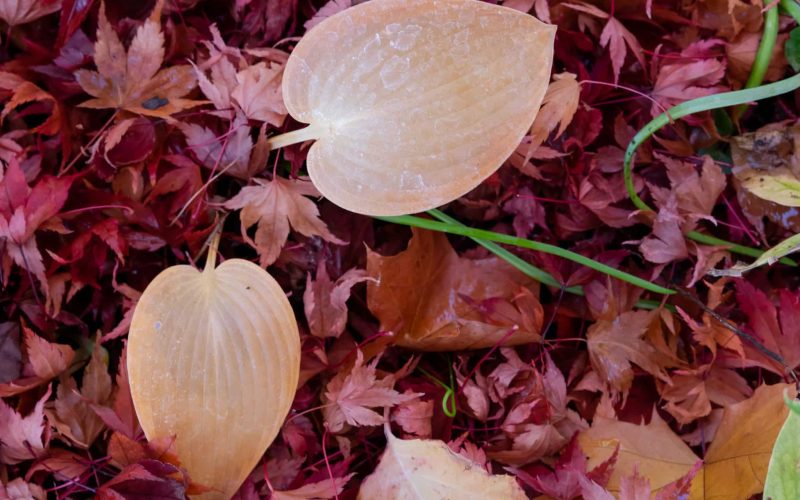
Faded flowers
I like the romantic, melancholy look of some faded flowers and certain seedheads, so I tend to leave them on until the spring. I’ll remove anything that looks downright depressing, though, and once you’ve enjoyed the autumn colours of paeony leaves, it’s best to remove them to prevent disease.
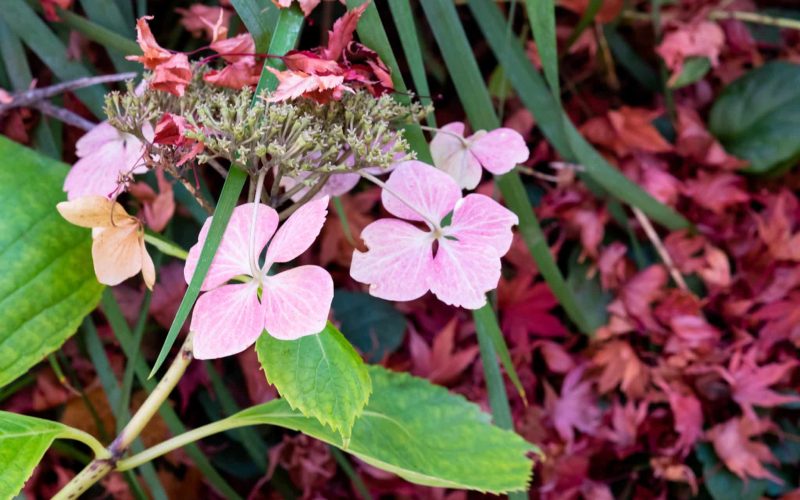
Gardening on a steep slope
I’ve been busy with what I have been calling extreme gardening. Our house is built into the rocks on a very steep slope, so the back garden has an almost vertical rock face behind it. Grasses were growing out of cracks in the rock and they scattered their seeds on my flower borders. I got the ladders out and pulled out all the grasses I could reach, along with some very stubborn periwinkle. While I was there, I pruned back the wild thyme and the pinks (dianthus) that had self-seeded in the most precarious places. There is another area of the rock where a previous owner had made planting pockets by building small retaining walls and planting small shrubs and gazanias. Nature abhors a vacuum, so where I had weeded, I planted a whole range of whatever plant material I thought might survive: hardy succulents, a rhus typhina, some geranium sanguineum, prostrate rosemary and even phlomis and bearded irises in places with a bit more soi. It’s an experiment really, to see what will survive. I plan to go up there only four times a year, because it’s quite a challenge, but I intend to really keep on top of the weeds. I’d like to establish a good range of succulents, especially the hen and chicken types, so I’m propagating what I have and looking out for more.
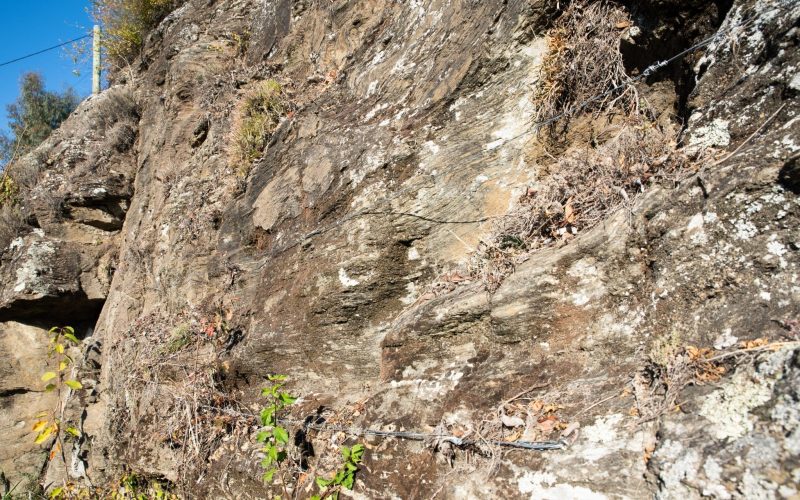
Gardening jobs to do in June
Stay in and keep warm
Check your Gardenize app and update your areas. It’s a nice way to remember how the gardening year went and it will help you to make plans for the next growing year.
Browse seed catalogues and plan for the spring.
Get outside in the fresh air
Plant out any seedlings once they have developed their true leaves or pot them on into richer compost. Seed-raising compost contains hardly any nutrients, as it is designed to support seeds during germination and for a short period after that. I sow my seeds in coir, which helps the seeds to develop fantastic root systems, but the beetroot seedlings that I planted out recently had rather yellowing leaves because they lacked some of the minerals they needed for growth. A couple of days in good soil full of earthworms and they have settled in nicely and begun to make healthy new leaves.
Check your outdoor taps and pipes to make sure there are no leaks and that they are suitably insulated so they don’t freeze.
For the vegetable garden, very few seed varieties can be sown, but make the most of the opportunity to get a few plants started: onions, radishes, shallots and spinach. For onions and shallots especially, it’s good to sow a few seeds every couple of weeks. Try sowing them in blocks, with four or five seeds in each block. When they are ready to plant out, you can plant out the whole block and thin them out when they are big enough to be used as spring onions.
Carry on planting a few garlic cloves every few weeks. That way, you can stagger your harvest and provide a range of slightly different sowing conditions. Use your Gardenize app to record what you have planted and where.
If you don’t have time for intensive weeding, prioritise the vegetable garden. It doesn’t take long to hoe between rows or scratch out seedling weeds. Resuming the battle against couch, clover and vetch among established plants in the borders might just have to wait until the days are a bit longer.
Remove fallen leaves from paths and lawns.
Remove any dead growth that looks downright depressing.
Do any tree work. When the leaves are off is the best time for pruning or chopping down trees.

About the writer
My name’s Pamela and a few years ago, at the age of 55, I made the decision to start a new adventure. I left the northwest of England, where I had lived all my life, and moved to New Zealand. I’m excited to be a guest blogger on Gardenize, and I love writing about my garden in beautiful, sunny Alexandra in Central Otago. My garden here is about as different as it could get from the damp, shady garden I left behind. Central Otago is the hottest, driest, coldest area in New Zealand, as we have hot summers and cold winters, along with a semi-arid climate. The area is famous for its orchards and vineyards. It has many quaint little rural townships with pretty cottage gardens featuring peonies, bearded irises, hollyhocks, lilies, roses, and lavender that grow so well here. The landscape is spectacular, with dry, rocky mountains and impossibly blue lakes and rivers. The dry mountains look barren, but they’ve actually covered in tough little thyme plants: a great clue to what might grow well in the garden.
GARDENIZE GARDEN APP
A gardening friend with a green thumb and photographic memory
Gardenize is an app for gardening and cultivation that helps you to overview, understand and develop your garden and your gardening skills.
Order makes it easier to succeed and Gardenize structures information and photos and makes it searchable for you. You also get tips and inspiration from other Gardenizers around the world.
Gardenize is free to use and you can download Gardenize from the App Store or Google Play, or create an account the Gardenize web app for web browsers.
Get to know Gardenize better here.

